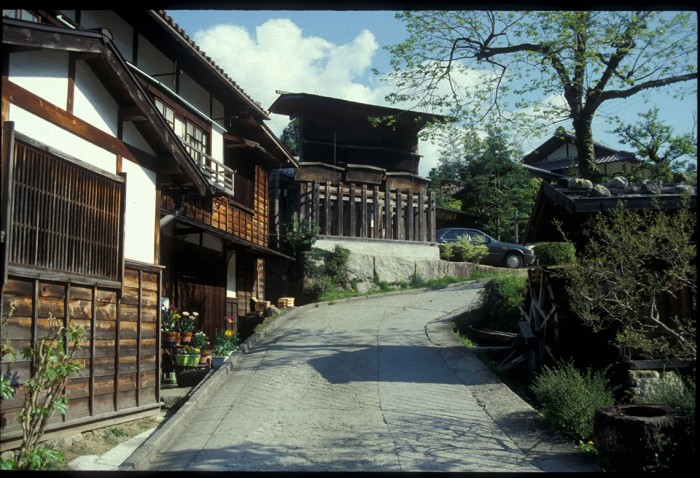
The edicts and regulations from the shogunate authorities were announced to townspeople and villagers by posting them on an official notice board known as the kosatsuba. The regulations were first painted on a wooden board, which was then nailed to the kosatsuba. Such notice boards were located in every town and village, in a prominent position alongside the main highway where everyone could be sure of reading the regulations.

kosatsuba
The system of posting official regulations became widespread after 1711 when a revised criminal code was announced by the shoguns chief magistrate. The regulations both advised people on such as the standard charges for porterage, as well as announcing prohibitions on activities considered potentially harmful to the government. The latter included a ban on the sale of “new books of doubtful authenticity”, as well as a prohibition “to enter into sworn compacts or to form associations”.
Perhaps the best known of the government prohibitions was that against Christianity. The edict of 1711 which was posted on all kosatsuba read as follows:
‘The Christian sect has been interdicted for a long series of years. In case of any persons being suspected of belonging to it, a report must of course be made of the fact. The following rewards will be given to informers:-
For denouncing a priest (pateren) – 500 ryo
For denouncing a brother (iruman) – 300 ryo
For renouncing the sect – 300 ryo
For denouncing a convert to the sect or anyone who consorts with a convert – 100 ryo
Even if the information laid is only to the effect that the person indicated is amongst those who live along with a priest or brother, or amongst those belonging to the sect, the (full amount of) 500 ryos will under certain circumstances be granted. In case the discovery of the hidden sectaries is made from another quarter (than where they are in hiding), the head man (nanushi) of the village and the members of the punchayet (gonin-gumi) will all be deemed accomplices, and will be punished as criminals.
The Magistrate
Punishments were severe, and included execution by decapitation or crucifixion. Execution grounds were also placed alongside the main highways where as many people as possible could see the exposed corpses or severed heads displayed on posts. This, it was hoped, would deter any would-be criminals. Like the execution grounds, kosatsuba were designed to represent the strength of shogunate authority and to intimidate. Most kosatsuba disappeared promptly after the system was abolished in 1871, shortly after the Meiji Restoration. In some post-towns, however, kosatsuba have been restored to remind people of the harsh times of the Edo period.

